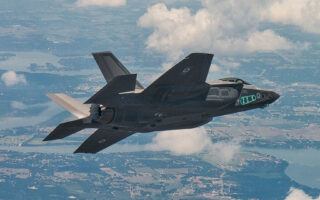Greece, Turkey upgrading their aircraft

The decision by the United States to offer Greece and Turkey advanced fighter jets, which will significantly enhance their military might, has different repercussions for the two Aegean neighbors.
Naturally, most analysts point to the quality and capabilities of the weaponry, but an important dimension is also their purpose and use; how each of the two countries plans to utilize the new and upgraded military equipment differs substantially.
For Greece, a reliable NATO ally, it will serve defensive needs. There are no expansionist aims, no “borders of our heart” that extend beyond the present internationally recognized ones.
That is not necessarily the case with our neighbor to the east, which boasts about its military presence and role in the broader region, often emphasizing, directly or indirectly, a sense of “continuity” with the Ottoman Empire.
The purpose of this brief note is obviously not to enter into a historical reflection. Not even to touch upon issues of military superiority on this or that level – Greece seems to be a step ahead of Turkey in aircraft technology, while the latter has a numerical advantage in fighter jets and is producing, and actually even exporting, its own UAVs.
The point here is simply to emphasize the fact that it is theoretically surreal and practically unacceptable within the context of an alliance that one member might use weapons the leader of this alliance provides it with, against another.
That said, and in the context of the delicate balancing act under way that allowed for the sales to both countries to move forward, Washington should actively ensure the weapons are indeed not used against a fellow NATO member, while in the same spirit, continuing its diplomatic engagement to bring the two countries closer, building on the positive momentum of the last 12 months.





